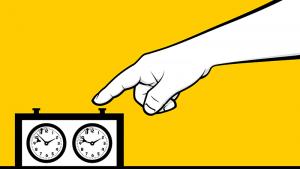
Mastering Opposite-Colored Bishops
As beginners, we are taught a litany of strategic precepts that inform our thought process and shape our general understanding.
"Occupy the center," "knights before bishops," "the rook's place is behind the passed pawn" — all of these principles are steeped in truth, but they must be taken with a grain of salt. Positional tenets are meant to guide rather than dictate; the ability to violate them is a crucial part of every modern grandmaster's arsenal.
One particularly well-known cliché states that the presence of opposite-colored bishops considerably increases a position's drawing tendencies. The following paradoxical endgame is a case in point.
As IM Jeremy Silman notes in his excellent Reassess Your Chess Workbook, "opposite-colored bishops often give the defending side chances to make a draw even if he's a pawn or two down." Shoker was three pawns to the good, a decisive material advantage 99 times out of 100. Yet the opposite-colored bishops enabled Gorovets to erect an impregnable fortress.

However, the presence of opposite-colored bishops should never be automatically interpreted as a sign that a draw is near. To silence any skeptics, I would like to share my first experience with opposite-colored bishops.
Incredible. I cannot resist mentioning that it takes the computer eons of time to see the forest for the trees. Stockfish 6 gives only a relatively small advantage after 40.Kg2, and the evaluation does not change for several moves. It is refreshing to know that there are still areas of the game in which the human mind reigns supreme.
Having learned my lesson, I was finally able to redeem myself three years later.
Though somewhat one-sided, this game clearly shows that the presence of major pieces considerably increases the attacker's chances for success. Operating on an uncontested diagonal and impervious to attack, the bishop singlehandedly pulverized Black's defensive line. Meanwhile, its counterpart could only look on in horror.

As Bobby Fischer repeatedly demonstrated, the bishop is an incredibly resourceful piece. Even in objectively drawn positions, you should not cease your search for practical winning chances. In the following game, I was on the verge of offering a draw, but found one more way to test my unsuspecting opponent.
Concreteness is the fulcrum on which modern chess stands. While general principles and clichés provide a helpful framework, every position -- even those featuring opposite-colored bishops -- must be evaluated separately.
RELATED STUDY MATERIAL
- Read GM Naroditsky's last article: The King Hunt, Revealed.
- Watch IM Keaton Kiewra's video: Fischer Blunders A Bishop -- Or Did He?
- Practice creating deadly bishops in the Chess Mentor.
- Practice your bishop tactics in the Tactics Trainer.
- Looking for articles with deeper analysis? Try our magazine:The Master's Bulletin.






